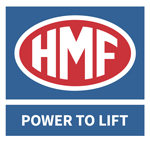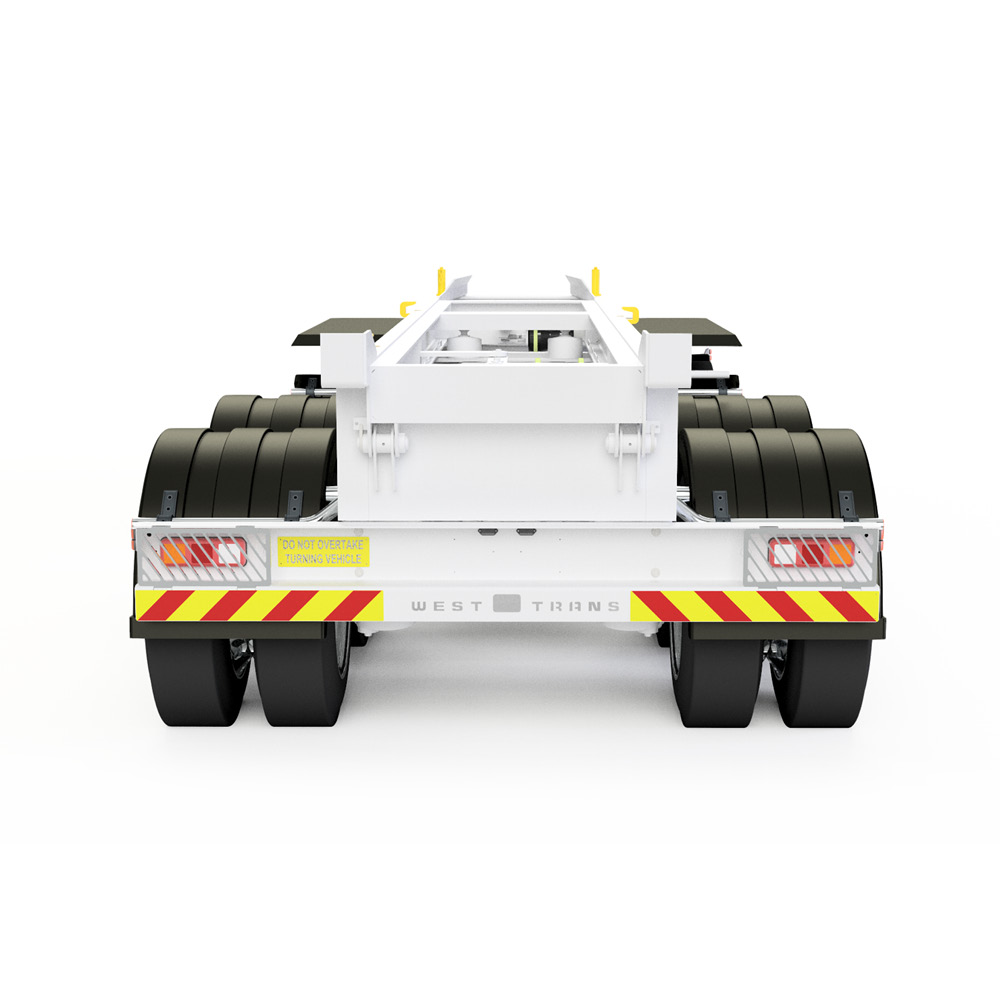Dog trailers are the perfect medium-sized transport solution for industries ranging from construction to waste management to agriculture. Their versatility, high load-bearing capacity, and the manoeuvrability afforded by their axle design mean they’re equally at home in built-up urban environments and in wider regional areas.
The dog trailer is an adaptable piece of equipment, but its versatility means it pays to know the exact type of trailer you need for your job. This is the ultimate guide to dog trailers, where we answer all your questions about this valuable addition to your transport needs.
What Are Dog Trailers?
Dog trailers are trailers with two axle groups perfect for towing behind a hook-lift truck. They are lightweight compared to other classes of trailer, are the right size for urban environments while also strong enough to handle heavy loads, and come with a range of customisation options. Logistics, waste management, construction, and agriculture are just some of the many industries that commonly use dog trailers for their versatility, reliability, and customisation options.
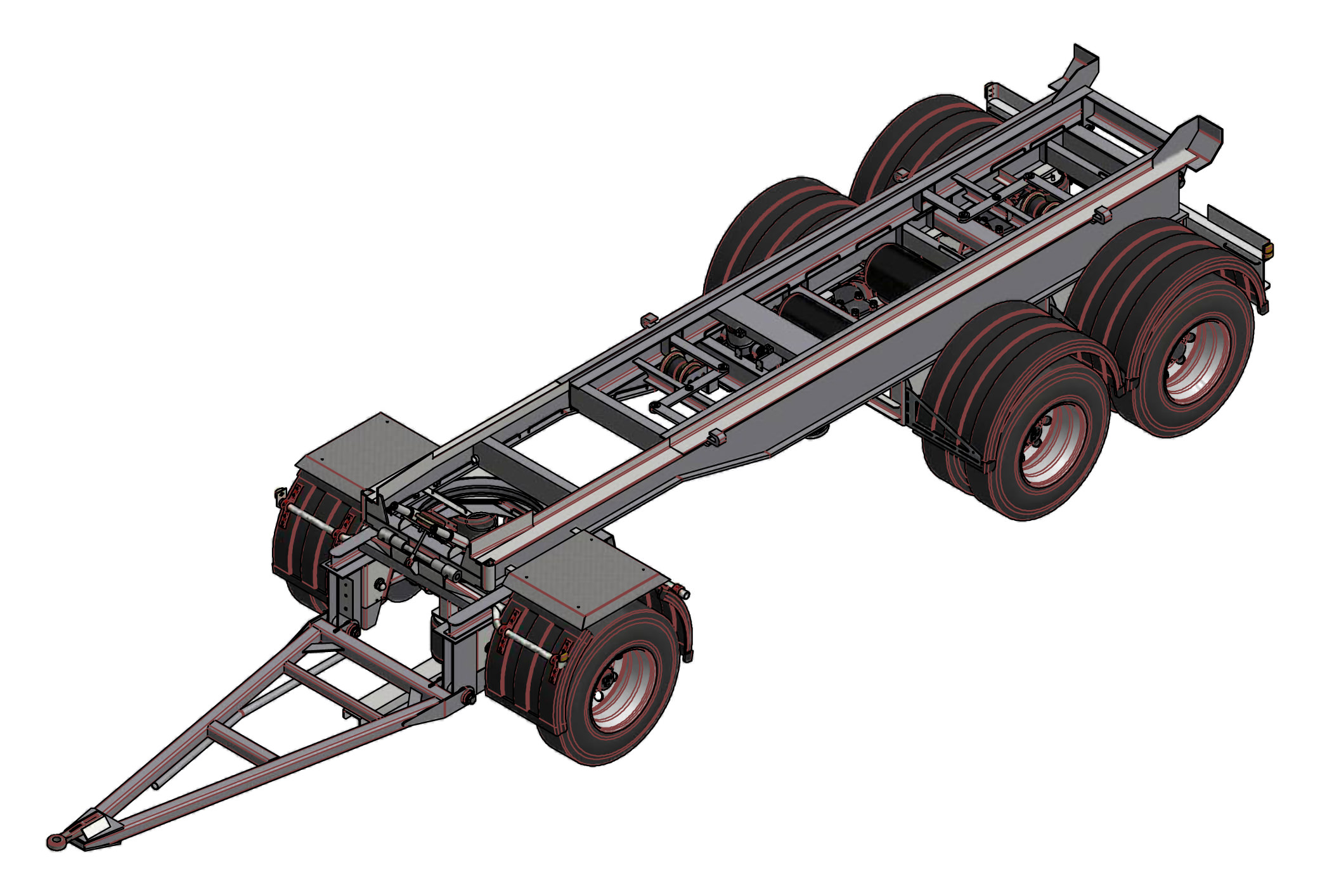
Types of Dog Trailers
There are several types of dog trailers, and while they all have roughly the same load capacity, they do come with additional specifications to suit every job.
Tri-Axle vs. Quad-Axle Dog Trailers: The two main types of dog trailer are the tri-axle and the quad-axle. A tri-axle has one axle on the front on a turning dolly and two axles at the rear a pair of wheels at the front on a turning axle and two pairs of wheels on the back, while a quad-axle has two axles pairs at both the front and back. While the tri-axle has a one tonne lighter tare weight (4800 kg to 5800 kg), the quad-axle can manage nearly 10,000 kg more of aggregate weight (35,000 kg to 25,500 kg). The quad-axle also sacrifices the tri-axle’s manoeuvrability for extra support with eight wheels to the tri-axle’s six.
Customised Dog Trailers: Dog trailers are ideal for customisation with a wide range of options to tailor them to the specific circumstances of your operation, including length adjustments and additional features, such as a step deck or flat top design.
Tipper vs. Non-Tipper Trailers: A tipping trailer can tip its load onto the ground without having to load the bin back on to the hook lift truck the assistance of an excavator or front-end loader, saving time and personnel effort. However, it comes with a higher centre of gravity which makes it slightly less stable than the non-tipping variety, which can handle heavier loads with greater stability.
What are the long-term cost savings of investing in a high-quality dog trailer?
Investing in your equipment means higher costs in the short term but massive savings when it comes to maintenance and part replacement in the long term. While it is not necessary to immediately buy the top of the range, it is worth investing more than the bare minimum in a trailer that is essential to your operation.
Key Features of Dog Trailers
Five key features of dog trailers will help determine which model you buy to suit the needs of your business.
- Load Capacity: Load capacity generally differs between tri-axle and quad-axle trailers by a margin of 10,000 kg (25,500 kg to 35,000 kg), though both options share the same tipping load limit of 22,000 kg, subject to regional axle limit regulations.
- Suspension Systems: The right suspension option depends on the terrain the trailer will be expected to operate on. Leaf spring suspension uses the friction between layers of metal slips (called leaves) to cushion the trailer against bumps. It is the cheaper option and is easier to maintain. Air suspension uses airbags connected to air lines and valves to support the trailer instead. It is generally more expensive up front and requires a higher degree of maintenance. While air suspension does a better job of absorbing shocks in rough terrain, both systems are as safe as each other. West-trans will only offer air suspension for this application.
- Braking Systems: When it comes to the braking system on your dog trailer, West-Trans offers both disc brakes and drum brakes, catering to different needs and preferences. Trailers bearing heavy loads should have safety features built in, such as anti-lock braking systems (ABS). This provides additional stability and control in situations where both truck and trailer have to come to an immediate and unexpected stop.
- Safety Features: Additional safety features can include EBS (electronic braking systems), which uses a computer-controlled system and a series of sensors to calculate the safest way to brake.
Load stability mechanisms can also help reduce the risk of tipping over in high crosswinds or uneven terrain.
How to Choose the Right Dog Trailer
With the range of builds and customisation options available, it can be difficult to determine exactly what model with what extras to invest in.
- Load Requirements: What materials are you typically carrying, and how much do you want to carry at a time? Do you need to tip something loose like gravel or sand, or are you carrying cargo that is best lifted by a crane? Do you expect your load-bearing capacity to grow in the future and thus do you need to invest in a quad-axle trailer now?
- Compatibility with Existing Fleet: Ensure that the trailer you purchase can connect and function seamlessly with your current fleet of vehicles. Do you have a truck powerful enough to tow a fully loaded quad-axle? Is the coupling on the model suitable for the coupling on your existing trucks?
- Budget Considerations: While it can be tempting to go for the cheapest option available, over time the cumulative costs of repairs and maintenance can make a mid-range trailer the far more economical option. We understand that business is all about balancing upfront investment with long-term cost efficiency, so talk to a reputable dog trailer dealer like West-Trans to discuss how you can get the most out of your budget.
How do I know which type of dog trailer is right for my business?
Consider the parameters of your intended use and begin to tick off the options you need. What kind of load are you carrying? How far are you transporting it? Over what kind of terrain must the load be carried? What kind of safety features will give you peace of mind as a business owner and operator? Answering these questions can help you begin to narrow down the right type of dog trailer for your business. If you’re still unsure, contact the friendly team at West-Trans for support in selecting the optimal dog trailer for your operational circumstances.
Can a dog trailer be used with any truck, or does it need to be compatible?
This depends on the horsepower of the truck towing it. Generally, dog trailers can be used with most hook lift trucks that have the correct hitch and towing capacity. The upper weight limits for West-Trans dog trailers are 25,500 kg for a tri-axle dog trailer to 35,000 kg for a quad-axle dog trailer.
You must also consider National Heavy Vehicle Register trucking regulations and compliance, which will depend on the length of both truck and trailer(s) (over or under 20 metres) and weight classes.
Operational Tips and Best Practices
Getting the most out of your dog trailer’s operation requires a few tips to encourage best practices.
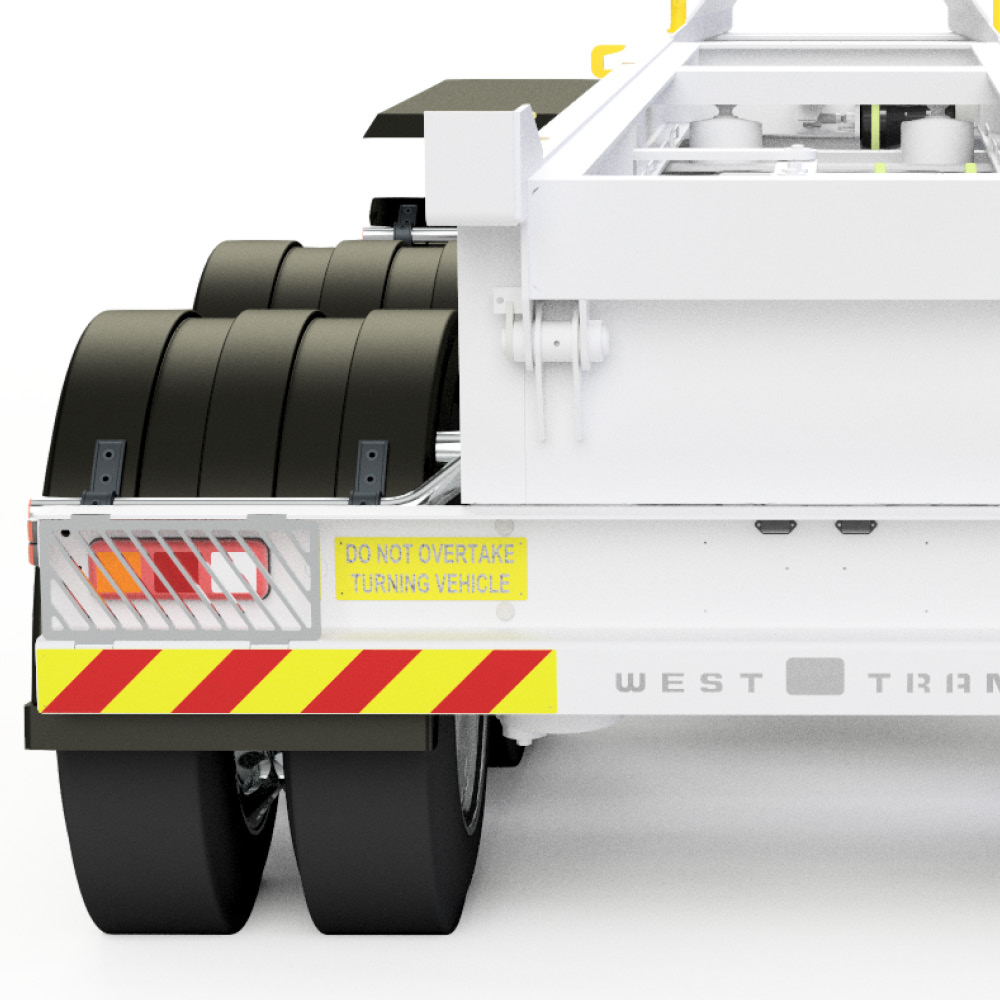
- Efficient Loading and Unloading: Depending on whether you have chosen the tipping or non-tipping variety, techniques for securing loads safely and effectively can differ. Tipping trailers should be loaded carefully, spreading out the load evenly to prevent the risk of tipping over.
- Driving Tips for Heavy Loads: Modern technology has made the dog trailer steady and reliable, but extra care should still be taken in challenging conditions, like steep terrain or poor weather. Give yourself plenty of room to stop and opt for lower gears going up and down hills to optimise stability.
- Load Securing Accessories: Load securing extras can protect your load during transit, both from the elements and the inevitable jostling of road transport. Use tarping systems, chains, and straps to ensure safe transit, keeping your load still and protected from rough weather. The West-trans tipping dog trailer can be paired with our Swing-away and Hycover tarping systems.
What are the best practices for driving with a dog trailer?
Driving with a fully loaded dog trailer requires maintaining a high degree of vigilance. It is important to maintain distance from other vehicles and have a healthy stopping distance. Use low gears when navigating up or down slopes, avoid sudden accelerating or braking, and navigate corners carefully.
Maintenance and Longevity
To get the most out of your equipment, you need to have a frequent and diligent maintenance schedule. Looking after your dog trailer increases its longevity, reduces its wear and tear, and ensures your business can continue to operate without interruption.
How often should a dog trailer be maintained?
This depends on the rigour of your operation. In extreme examples, weekly or even daily inspections may be warranted to ensure that the suspension is working correctly and that everything is operating without damage. This is particularly important for trailers operating regularly in rough terrain.
Routine Maintenance Tips: Conduct regular checks on brakes, tyres, suspension, and load-bearing components to prolong the trailer’s life and ensure it is up to the task it was designed for. Keep detailed records of what you find to determine if there are trends or if minor damage to a component is getting worse.
Seasonal Care: Adjust maintenance practices for extreme weather conditions, like corrosion prevention during rainy seasons and a regular deep cleaning schedule for trailers operating in dusty or gritty conditions.
Signs of Wear and When to Replace Parts: Electronic components, such as brake systems and tarping system components, will have indicators to show when repairs and replacements are necessary. For other components, manually check for wear and tear or signs of corrosion or rust. Components that have either become too loose or too tight are a good place to start in terms of replacing parts to maintain safety.
Safety and Compliance Standards in Australia
To operate a dog trailer in Australia comes with compliance standards to keep your drivers and other road users safe.
Australian Load and Weight Regulations: Dog trailers are subject to maximum weight and load distribution regulations under Heavy Vehicle National Law (HVNL). For example, dog trailers must not be heavier than the truck towing them. They also have a maximum length of 19 metres when towed by a 3-axle rigid truck and have maximum allowable GVM/GCM tonnages based on axle configurations.
Licencing Requirements: You will need to have acquired a heavy combination licence to drive a truck with a single dog trailer. To apply for this, you will also need to have had an open car (C class) licence for three years and a medium rigid (MR class) or HR class licence for at least one year.
Safety Compliance Features: Check your state government regulations for whether features like ABS, EBS, and load distribution requirements are legally required to meet safety standards. Even if they are not mandatory, West-Trans highly recommends these modern safety features.
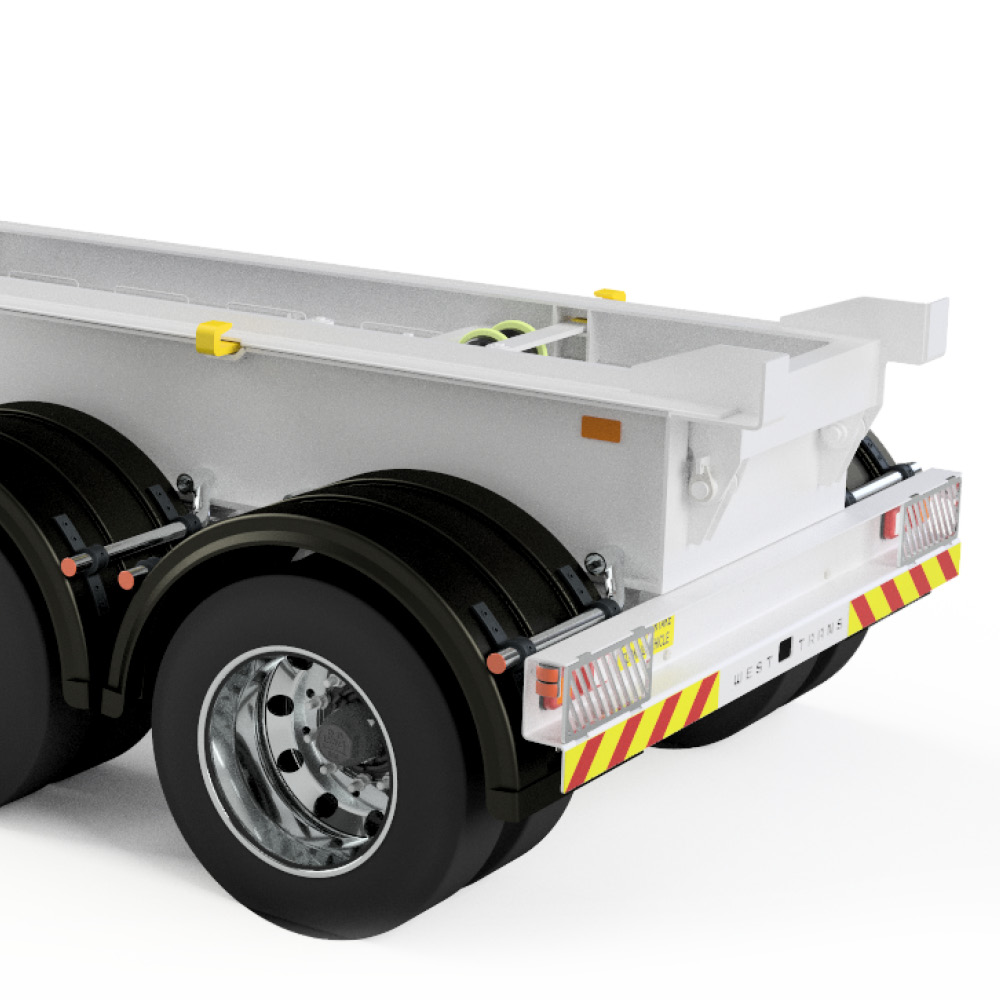
Are automated tarping systems available for dog trailers?
Yes, they are! Automated tarping systems, such as the West-Trans HyCover with a swing-away base unit, are perfectly suited to cover the loads of dog trailers.
Advantages of Using Dog Trailers for Business
There are several advantages to using dog trailers over other types of trailers.
Increased Efficiency: Larger than most trailers but smaller than semi-trailers, dog trailers occupy the perfect middle ground to allow businesses to transport more goods over fewer trips.
Cost Savings: Dog trailers result in lower fuel consumption as they reduce the number of small trips required and reduce the need for additional vehicles. They can be towed by a standard three-axle rigid truck and have enough loading space to handle most transport needs.
Versatility and Adaptability: The versatility of dog trailers makes them perfect for the transport of various materials, from construction debris like gravel and concrete to agricultural products, such as soil and fertiliser.
How do dog trailers compare to semi-trailers for transport tasks?
Dog trailers are smaller but more manoeuvrable than semi-trailers and can handle rough terrain better than larger trailers. Semi-trailers also require a more powerful class of tractor unit to tow them, which sharply increases fuel consumption.
When should I consider a dog trailer instead of a pup trailer or converter dolly?
Pup trailers and converter dollies can be extremely useful for adding additional carrying capacity to an existing trailer set-up, but you can’t go past the convenience and storage capacity of a standard dog trailer with its one-size-fits-most approach to transport logistics. A dog trailer is the best place to start when transporting goods, with add-ons always an option later if you deem it necessary.
How to Choose the Right Supplier
Choosing the right supplier can be as challenging as choosing the right model, so look for suppliers that display the following:
Reputation and Reviews: It is important to select a reputable supplier or company with a proven track record, so check previous customer reviews extensively before committing to a supplier. The more satisfied past customers they have, the greater the chance you will be a satisfied future customer.
Customisation Options: Ensure that the supplier offers customisation options to suit your unique business needs. This also displays that they are confident in their product knowledge and have the information and experience to develop an exceptional product for your business.
Warranty and Support: No matter how well-built the assembly is, having warranty options and ongoing support for maintenance and parts is crucial in providing peace of mind as a customer of a trailer supplier. After all, a trailer is a big investment in your business and a supplier’s ongoing support should be commensurate to that investment.
West-Trans: Australia’s Trusted Dog Trailer Supplier
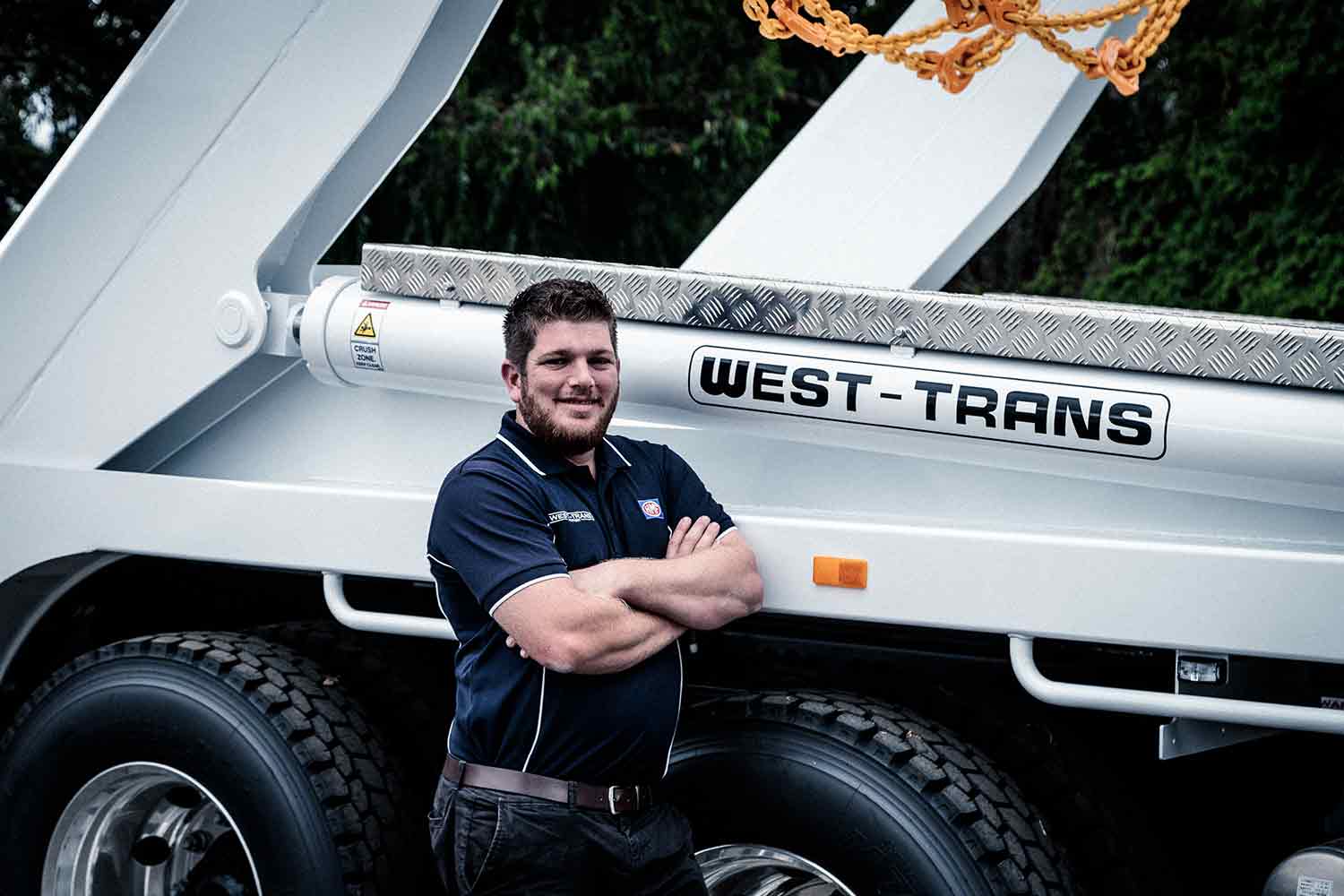
Dog trailers occupy the perfect space between smaller car-sized trailers and much larger semi-trailers, bringing an element of convenience and versatility to the transport logistics of your business. Whether you are in mining, agriculture, construction, waste management, or any other industry that requires reliable transportation equipment, the dog trailer delivers every single time.
With its breadth of customisation options, its durable Australian steel, and its enviable load capacity, you’ll be hard-pressed to find a finer addition to your transport logistics equipment. Ready to take the plunge and add a modern dog trailer to your fleet?
Get in touch with the friendly and expert team at West-Trans to discuss how we can fill the gap in your transport fleet. We offer a wide range of customisation options, offer both sales and service around the country, and are ready and waiting to answer any questions or concerns you have about adding a dog trailer to your business’s assets.

